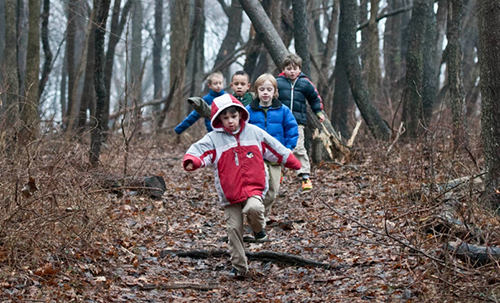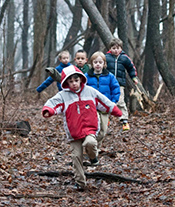Huck Finn isn’t dead, but he’s not feeling well. Few young people know the joy of wandering the woods all day without a parental helicopter hovering overhead.
Nor do they go huntin’ and fishin’ the way they used to. Some of us remember taking firearm safety in elementary school. (Some of us remember mother’s voice: “What are you doing inside on a day like this? Get your gun and go to the dump.”) Doug Bancroft recalls it being common for Victoria kids of the ’60s and ’70s to buy a .22 at Robinson’s, then bring it home on the bus. Don’t try that today.
Bancroft, a retired federal government scientist, is vice-president of the Victoria Fish and Game Protective Association. It’s a group best known for its tradition of opening its Beacon Hill Park-sized property atop the Malahat to the public on Father’s Day. They’ll do it again 10 a.m. to 3 p.m. on Sunday, giving people a chance to try their hands at archery, fishing out of the association’s stocked pond, and a variety of types of shooting, including black powder and picking off clay pigeons. “It’s an opportunity for people who have never tried such things to just do it,” Bancroft said.
There’s more to the association than that, though. Founded 100 years ago today, largely by First World War veterans looking for a place to hang out together, its membership continues to grow, topping 4,000 this year. Most of the newcomers are drawn by recreational shooting sports, but just under half hunt regularly, while a lesser number fish.
These are people who actually spend time in the bush, who have a pretty good idea of what’s happening to wildlife — and what they see is worrying.
“We’re very concerned about where we’re going in this province,” Bancroft said. Many species are in decline, and there’s little indication the authorities are willing to pull the plane out of its nosedive.
If it seems contradictory that the alarm over the state of wildlife populations is being sounded by a group dedicated to eating them, just remember this: no animals means no hunting.
Also, these are people who tend to do more than click on the odd Facebook petition when pushing the conservation cause. They’re the ones who volunteer to clip fins at the Goldstream hatchery, who get their gumboots dirty on projects like the Colquitz Creek-Quick’s Pond rehabilitation project, who provide the eyes and ears of the Wildlife Watch program, and who contribute tens of thousands of dollars to such work. They’re connected to nature at more than a vicarious level.

Photograph By RON TARVER, MCT – Times/Colonist
They’re also feeling resentful. It often seems as though officialdom’s only answer to falling wildlife stocks is to cut the number that can be killed by resident anglers and hunters. That would be OK if doing so had the desired outcome, but it doesn’t, Bancroft said. “We’re always the first to be thrown under the bus, and it isn’t working.”
In truth, there are plenty of ways in which human activity devastates animal populations. Loss of habitat is an obvious one, though others are more surprising. “If you create gravel roads, then you increase the ability of wolves to predate,” Bancroft said.
That doesn’t help stricken caribou herds. Hunters worry about moose numbers now, too. “That would be a terrible thing to lose.”
Simply reducing the hunters’ take as numbers fall won’t solve the problem. They call that “managing to zero” — cutting the harvest until the animals in question are all gone. Ottawa’s new chinook salmon restrictions have resulted in many of Bancroft’s buddies parking their boats this summer, but does anyone think that will save the salmon?
Note that the Fraser River chum salmon gillnet fishery has been devastating to the once-plentiful steelhead, an example of humans inadvertently wiping out an iconic species, Bancroft said. Just 177 fish reached their spawning grounds in the Thompson River in 2017. Only 57 made it to the Chilcotin. Can’t fix that just by making the anglers stow their lines.
These problems are neither new nor unknown. Two years ago, in the run-up to the provincial election, the B.C. Wildlife Federation’s Al Martin — a former government bureaucrat in charge of fish, wildlife and ecosystems — spoke of “a train wreck of natural resource management.”
Trying to sustain populations through bag limits and catch limits isn’t enough, Martin said: “You need to look after the ecosystems.”
It would help, Bancroft said, if more people — more young people — had a sense of what we stand to lose.
Get your head out of your screen. Get outside.
 Article by Jack Knox – Times/Colonist
Article by Jack Knox – Times/Colonist

